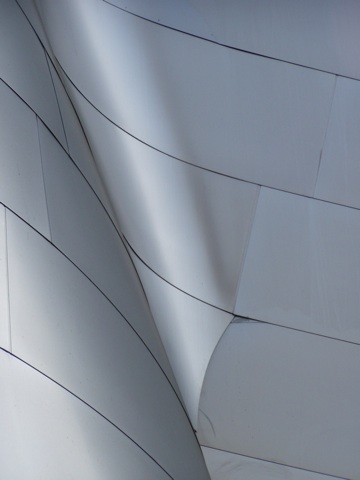
Frank Lloyd Wright thought that he was the messiah of architecture and that his work would change the face of the earth. Ayn Rand immortalized this part of his personality in The Fountainhead.
Buckminster Fuller believed that if we changed our bodies to his Dymaxion Rhythym and lived in Dymaxion Houses we could produce more and prosper. His geodesic domes never really caught on, but one did land a prominent place in the most prosperous and happiest place on earth.
Le Corbusier imagined himself to be a new Vitruvius reinventing the discourse of architecture and the human habitation environment. By the end of his century (the 20th) society had rejected his massive housing blocks as dehumanizing and there was a massive resurgence in classical pastiche.
Now Frank Gehry has envisioned himself as the new Pope, when working ex-catia he is a man that can do no wrong. In essence, no one can hate him even when they appear to be mad at him. According to an article in the New York Magazine, Mr Gehry refuses to accept that the recent protests about his new Atlantic Yards development have anything to do with him. Instead they are directed towards the developer. This rubber-and-glue (think childhood playground taunts) mentality seems to apply to much of his past work as well.
It really makes you think, what is it about having the ability to mold and form space with your own bare hands (or mouse and screen) that makes an Architect believe he is semi-divine. And why hasn’t this plague of ego affected women architects?
I think, in a word, it’s ascension. The ability to affect reality in such a permanent fashion from one’s forms would by some definitions be a magical act, and to that end one that edges toward apotheosis. And there’s an element of power to that which is particularly heady to closeted macho sensibilities.
As for why this isn’t endemic in female architects… who’s to say it hasn’t? Perhaps they perceive themselves as nurturing goddess-figures, creating nests for the youth of the future. But even if this would manifest itself in such a way as to counterbalance the testosterone-laden fantasies of male architects, I don’t know how we’d know, anyway.
Frankly, there are so few female architects that receive the sort of “star” publicity male architects receive that I can’t even readily name one outside of Zaha Hadid.